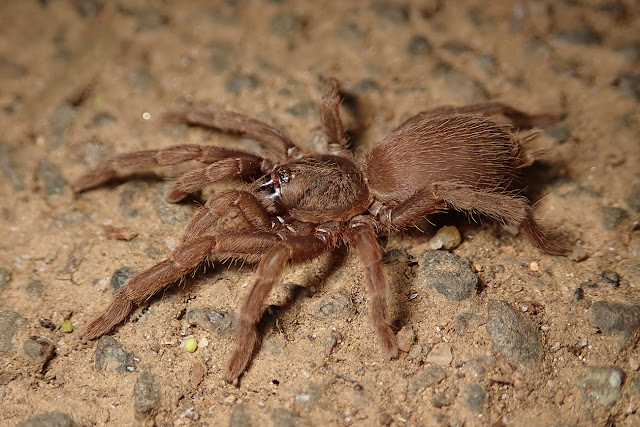Tiger Shrike - probably my top bird this month so far
Over a week after Typhoon Mangkut hit Hong Kong, we are still experiencing the aftermath of it's destruction. We received sustained winds of well over 150km/hr and gusts over 200km/hr where I live. The Super Typhoon caused a breakdown of infrastructure in the city for the first two days, roads were blocked by trees and debris, public transport were a total chaos. I didn't dare venture out but when I did the damage were very visible, concrete walls were blown down, cars crushed by trees and too many fallen trees to count. We were lucky that our city received no casualty during the typhoon, although the typhoon caused quite a lot more damage in the Philippines before it headed our way.
Concrete wall that encase the pipes got destroyed...
This booth was blown over 200m from it's original place.
Cars crushed by trees.
Trees and concrete encasement ripped apart.
Too many fallen trees to count...
Glass shattered, street lamps got blown away.
Many birding spots had been blocked and access near impossible. Both Mai Po and Tai Po Kau are closed and probably will take a while before they reopen. Therefore, I've once again put more effort into visiting urban parks, including Lai Chi Kok Park, where I only found a single juvenile Asian Brown Flycatcher. A Red-necked Phalarope had been recorded there after the typhoon, but I could not relocate it.
Asian Brown Flycatcher - juvenile
While back at home, there's been quite a lot of bird movements, not of migrants but a bunch of local forest species, including Blue-winged Minlas, Silver-eared Mesias and Mountain Bulbuls, all three species are not usually common here but have been quite regular for the past week or two after the typhoon. I was also greeted by a flock of Greater Necklaced Laughingthrushes, which are quite regularly seen here, but to my surprise within that flock were up to nine Lesser Necklaced Laughingthrushes! I've only seen this species at Tai Po Kau in the past, so it's interesting to see how they've started dispersing, whether this have anything to do with the typhoon I am not sure, but I sure am very happy with this new local patch tick.
Greater Necklaced Laughingthrush
Lesser Necklaced Laughingthrush
The other site I visited regularly is Ho Man Tin, Arctic Warblers are still in good numbers there, some of them can be extremely approachable, such as this one which came within a few meters to me. Other warblers that had stuck around were Pale-legged Leaf Warblers, Eastern Crowned Warblers and the odd Yellow-browed Warbler.
Arctic Warbler
Scarlet Minivet - male
Masked Laughingthrush
Red-whiskered Bulbul
Red Collared Dove is not a common sight in urban areas, so this lone male is likely a migrant passing through. While I also saw an adult male Orange-headed Thrush, this is already the second bird I've sen at Ho Man Tin after the juvenile.
Red Collared Dove - male
Orange-headed Thrush - male
Asian Brown Flycatchers had became a regular species at Ho Man Tin that you can hardly miss. While a single Black-winged Cuckooshrike was my first for the season, it's always nice to see a newly arrived species for the winter.
Asian Brown Flycatcher
Black-winged Cuckooshrike
There had been plenty of Brown Shrikes around at Ho Man Tin, I counted up to three individuals, but could have been more! All the Shrikes I've been seeing at Ho Man Tin were Brown, until Tuesday when I finally struck luck and caught sight of the Tiger Shrike! It had stuck around Ho Man Tin for so long but had evaded me (and many others) since early September, always hiding somewhere...It amazes me how well these birds can hide considering what a small area Ho Man Tin is, a got a very good view for up to thirty seconds before it disappeared again, I heard that it showed a few more times after I left, but I was more than happy with the view I had.
Brown Shrike
Tiger Shrike - star bird at Ho Man Tin
Weather finally cooling off, with cooler evenings that certainly feel a lot more 'autumny'.














































